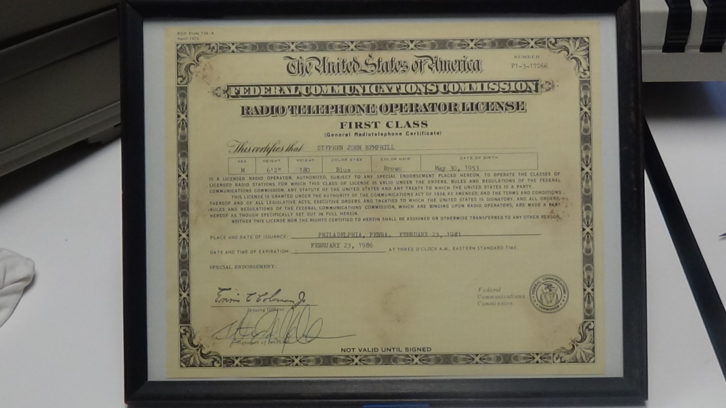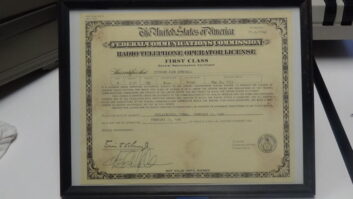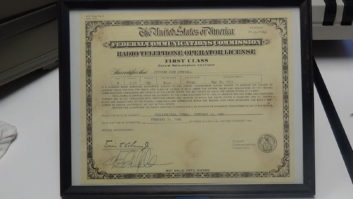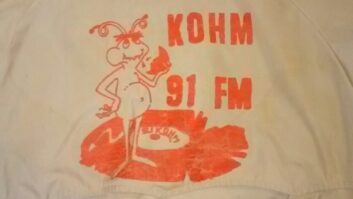Several readers responded when we reposted Buc Fitch’s article “The Demise of the First Phone,” first published in 2006 and reshared in Radio World’s SmartBrief e-newsletter. Comment on this or any article. Email [email protected].
First Phones and License Walls
I really enjoyed reading Buc Fitch’s article.
I was saddened in 1986 when my last FCC First Class Radiotelephone License had expired and was replaced by the “General Radiotelephone Certificate.” I remember how hard that I had worked, and studied, to earn that original license back when I was a high school student. In fact, I still keep my framed, expired original FCC First Class License on my office wall — ABOVE my “General” license!
I also remember the “license walls” in broadcast stations. The first one that I ever saw was the one at my high school FM radio station, WHHS, which was organized by the station’s technical adviser Charlie Higgins. It was the first Class D FM station licensed to a high school in the nation.
Thanks, Buc, for bringing back the fond, and somewhat sad, memories!
– Steve Hemphill, owner/licensee of WA2XMN, Alpine, N.J.

Draw This Please
“The Demise of the First Phone” reminded me of a story.
Ken Nielsen was a radio pioneer. He convinced the San Francisco Unified School District to apply for an FM station around 1940. Low-band FM. Their first transmitter was part of RCA’s display at the 1939 Treasure Island Exposition, a converted 27 mc diathermy unit. That station became KALW.
I learned a whole lot from Ken during his last year at KALW. His story of how he got his First Phone is interesting. He made an appointment with the engineer in charge of the nearest FCC office. He was shown into the EIC’s office. The EIC asked him some questions and then handed him a blank sheet of paper and a pencil. He was instructed to draw the schematic of a 1 kW standard broadcast transmitter and to show component values and typical operating voltages and currents.
That was his test. A real test.
– Bill Ruck, San Francisco, Calif.
Jocks, Too
When I was in college at Oklahoma State University I got a job at KOMA in Oklahoma City. It was a 50,000-watt three-tower directional, and everyone who worked there as a jock had to have a First Class License or have someone with them who did.
So I went to Elkins Institute in Dallas and basically learned the test answers. Best investment I ever made, because it helped pay my college expenses.
The KOMA transmitter at the time was actually on two levels and had water-cooled tubes. I was afraid to get near it but I knew how to switch the pattern at sunset and sunrise.
– John David, former executive VP, Radio, National Association of Broadcasters
[Check Out More Letters at Radio World’s Reader’s Forum Section]









